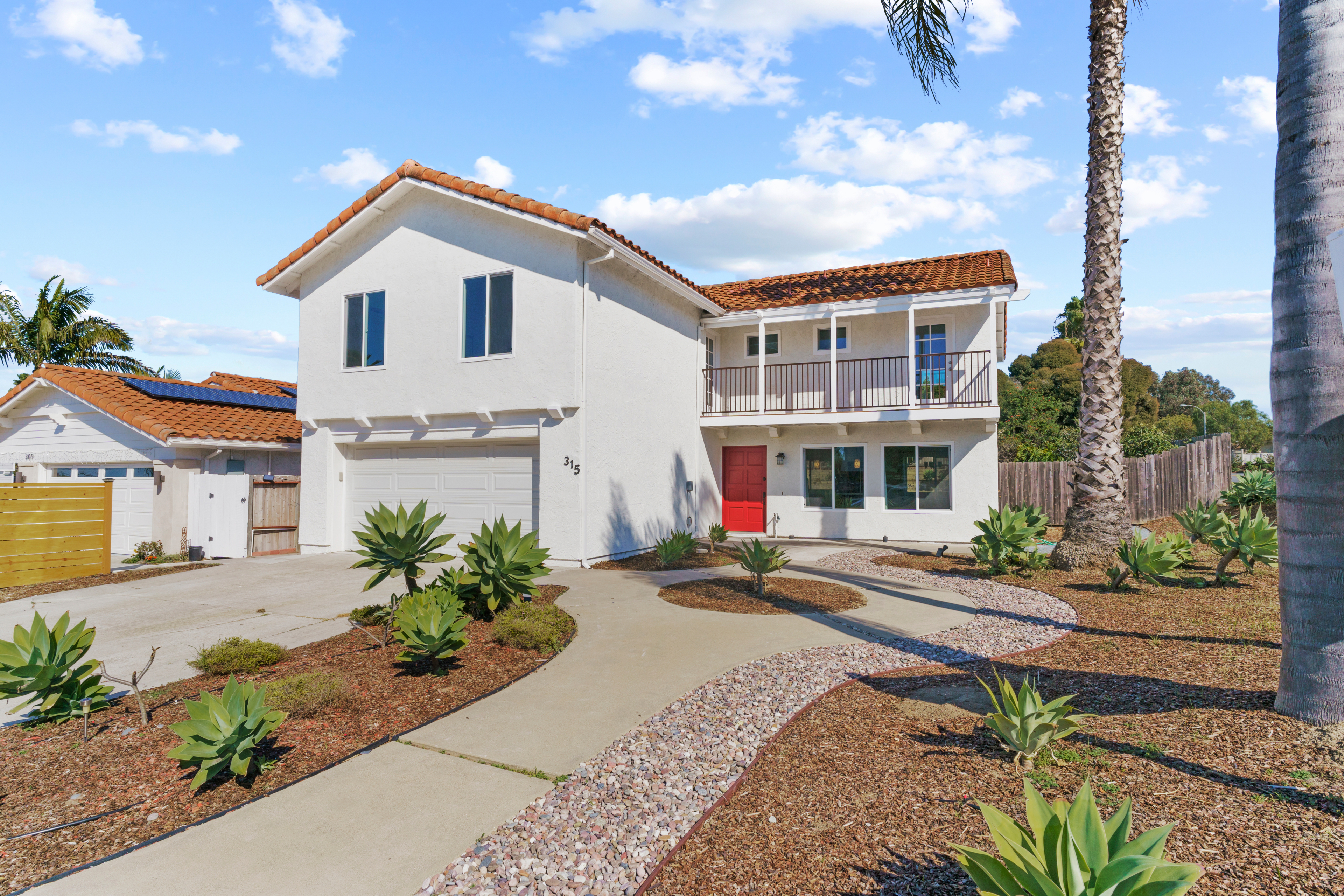How to Ensure Your ADU is Functional and Comfortable for Long-Term Living

Summary
Ensuring your ADU is functional and comfortable for long-term living involves choosing the perfect layout, balancing functionality and comfort, and including accessibility features for all ages.
Table of Contents
Introduction: Comfortable and Functional ADUs
If you’re looking for a flexible and practical way to expand your living space, consider an Accessory Dwelling Unit (ADU). An ADU is a secondary dwelling unit that can be added to an existing home to provide visitors and relatives with a functional and comfortable living area.
Building an ADU has many benefits, including improving the value and functionality of your property. While there is no “right way” to build an ADU, there are things you can do to ensure it is genuinely comfortable.
As licensed ADU builders in San Diego, House to Home offers unique insights into ensuring your ADU is fit for purpose and comfortable for long-term living.
Let’s begin.
Concept of Long-Term ADU Living
Long-term ADU living refers to using an ADU as a permanent or semi-permanent residence rather than a short-term rental or guest house.
What Makes an ADU Functional and Comfortable for the Long Haul?
1. The Balance Between Function and Comfort
Comfort and design are not just design elements but fundamental pillars of success for long-term ADU living. Functional ADU design requires a perfect understanding of the existing space and its purpose. While the importance of a functional building cannot be overstated, no one wants to live in a home that is neither comfortable nor enhances their lifestyle.
To balance functionality and comfort, you must consider space-maximizing approaches such as smart storage solutions, multi-purpose furniture, integrated technology, strategic lighting, and others.
2. Key Factors to Consider for Long-Term ADU Living
When choosing an ADU for long-term living, ensure the building has the necessary architecture and amenities to enable a functional and comfortable stay. Some of the factors to examine are:
- Design and Layout : A well-designed ADU optimizes space while minimizing waste.
- Energy Efficiency : Ensure the ADU can support energy-efficient appliances such as heating, ventilation, and air conditioning.
- Comfort : ADU amenities for comfort include multi-functional furniture, a well-designed kitchen, HVAC systems, and more.
Functional ADU Design Essentials
1. Space Optimization: Making Every Square Foot Count
Because ADUs usually have limited spaces, you must make every square foot count. The layout of your ADU is crucial to any space optimization strategy. An open-floor layout can create a sense of spaciousness, allowing for more effortless movement and more flexible furniture arrangement.
Consider creating multipurpose areas, such as merging the living and dining areas or the kitchen and dining. This strategy improves your space’s utility while also providing comfort.
2. Smart Storage Solutions for a Clutter-Free ADU
Consider vertical storage strategies such as wall-mounted shelves or tall cabinets to maximize wall space. Also, consider furniture with hidden storage capacities.
3. Multipurpose Furniture for Flexible Living
A well-designed ADU requires furniture that serves multiple purposes. Consider sofas that can be converted into beds, extendable dining tables, and fold-out desks. Also, consider using sliding doors instead of hinged doors. Multipurpose furniture enhances functionality, improves living conditions, and adds to the overall versatility of your space.
Creating a Comfortable ADU Environment
1. Lighting Tips to Enhance Comfort and Ambiance
Natural light is the most affordable and best light for an ADU. So, it makes sense to maximize sunshine by having wide windows that bring light and warmth into your room.
Also, consider an open floor plan. The lack of barriers allows sunshine to reach even the most remote locations, minimizing your dependency on electricity during the day. At night, LED light bulbs are ideal for generating a relaxing and tranquil atmosphere. They require less energy and last longer, which is an extra benefit.
2. Climate Control: Keeping Your ADU Cozy Year-Round
One of the most effective ways to keep your ADU pleasant all year is to invest in climate control equipment such as an HVAC system, energy-efficient windows, and enough home insulation.
Designing an ADU for Long-Term Use
1. Durable Materials for a Lasting Investment
When building your ADU for long-term habitation, use sturdy materials to ensure you receive your money’s worth and do not have to pay for monthly repairs and upkeep. Consider durable materials like hardwood floors and metal roofing. Other considerations are strong appliances for the kitchenette, bathroom, and furniture.
2. Accessibility Features for All Ages
Incorporate universal design principles to accommodate users of all ages and abilities. From a flexible floor plan to multifunctional rooms, ensure that every part of your ADU is designed for comfort. Smart home systems, such as thermostats, lighting controls, and HVAC, should be integrated to improve convenience and energy efficiency.
Read More: Top Multi-purpose Room Ideas for Modern Homes
Top ADU Living Tips for a Functional Space
1. Organizing Small Spaces Effectively
Keeping your ADU clutter-free is critical for maximizing space. To efficiently arrange your small rooms, regularly discard obsolete, broken, or unnecessary stuff. Innovative storage techniques, such as using wall space to hang bags, accessories, cleaning supplies, culinary gadgets, and other items, should also be implemented.
Also, hidden storage like chairs and tables with secret compartments and under-the-bed storage should be used, and multifunctional furniture should be integrated.
2. Maintaining a Balance Between Style and Function
Comfortable ADU living involves striking a balance between style and function. You must have a clear style you want to achieve to balance style and function. Ensure a cohesive and harmonious design by maintaining a consistent color scheme and selection of materials. Using your style as a template, choose multifunctional furniture such as sofa beds, storage ottomans, and desks with storage.
3. Consideration of Future Needs
Creating a functional ADU design is not just about functionality and versatility; it also requires anticipating and accommodating future needs. Key accessibility features, such as wider doorways, step-free entrances, and accessible bathrooms, cater to occupants of all ages and abilities.
Read More:
Building an ADU in San Diego: A Step-by-Step Guide
Conclusion
While adding an ADU to your property may raise the value of your home and provide an additional source of income, it is essential to note that comfortable ADU living is impossible without a functional design. You can make your ADU more functional and comfortable by maximizing small spaces, implementing inventive storage solutions, and using multifunctional furniture. House to Home, a registered ADU builder in San Diego, has years of expertise assisting clients in building and designing pleasant, practical ADUs. Contact House to Home today to receive a free quote.
Read More: Common ADU Pitfalls
FAQs
Essential features include a functional layout, adequate storage, natural light and ventilation, and smart home technologies.
Consider a multifunctional layout, compact kitchen appliances, multipurpose furniture, and innovative storage solutions.
Consider using durable materials like hardwood floors and metal roofing for a lasting investment. The plan includes accessible features like natural light, ventilation, and flexible floor plans.
Smart home technologies that you can incorporate include voice-controlled assistants, smart thermostats, and energy-efficient appliances.
Consider incorporating flexible floor plans and adaptable fixtures and using smart home technologies to enhance convenience and adapt to changing needs.
Common mistakes to avoid include inadequate storage, poor lighting and ventilation, insufficient insulation, and neglecting smart home integration.
Consider incorporating multifunctional solutions such as storage ottomans, built-in shelving, and hidden storage compartments.
Some strategies include installing enormous windows, incorporating skylight design, and using reflective surfaces.
Consider incorporating plush textiles, HVAC systems, warm lighting, and comfortable sitting areas to create an inviting and cozy environment.
Consider incorporating solar panels, rainwater harvesting systems, and sustainable building materials to reduce your ADU’s environmental impact.
About Author

Founder & Chief Sales Officer, House to Home
John Hayes is the Founder and Chief Sales Officer of House to Home Design Build Remodel, a leading general contracting firm serving homeowners across North County San Diego.
